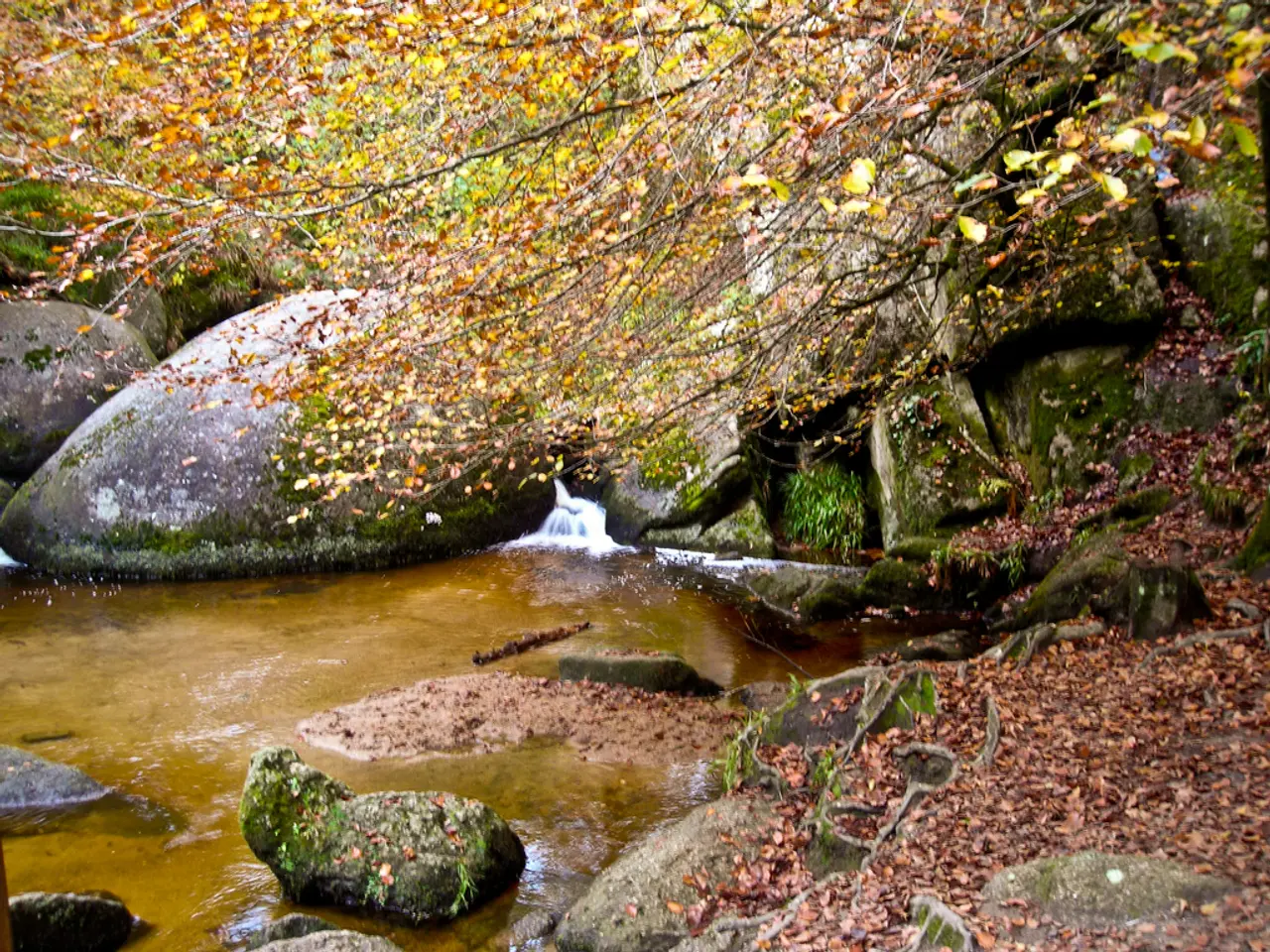Easy Landscaping Techniques Featuring River Stones
River rocks are a popular choice for landscaping due to their smooth texture, natural colours, and low maintenance requirements. These stones, which are naturally shaped by water over time, can be found in various sizes, from small pea gravel to large cobbles [1][5].
Pea Gravel, roughly the size of peas, is a common choice for pathways, water-efficient gardens, and mulch replacement. Known for their smooth texture and earthy tones, they offer a natural appearance that blends well with most garden designs [1][5].
Mexican Beach Pebbles are another popular option, characterized by their dark, uniform colour. These smooth pebbles are often used for decorative walkways, edging, or dry river beds to simulate streams [1].
Large Cobbles, as the name suggests, are larger than typical pebbles. Their size and durability make them ideal for edging or as focal points in landscaping designs [1].
Smooth River Rocks, with their naturally smoothed edges from water erosion, are suitable for water features, rock mulch, and garden decoration. They are durable and do not decompose, making them a low-maintenance option [1][3][5].
Beyond river rocks, other types of stones associated with landscaping include black basalt, black slate, black schist, black quartzite, and black lava rock. These offer unique textures and colours, such as the dark colours of black basalt and the porous nature of lava rock, which can be combined with river rocks for contrast and depth in garden design [2].
River rocks provide several benefits for landscaping. They are durable and do not break down easily, meaning they last much longer than mulch and help save money on mulch and upkeep [6]. They also improve drainage in the landscape and hold up well in high-traffic areas [7].
One of the main advantages of using river rocks is their ease of maintenance. Once installed, they require virtually no maintenance [8]. Additionally, they do not attract pests and offer a wide range of colours and options [9].
River rocks can be used creatively in various ways. For instance, they can be used to create a walkway or path throughout a garden or yard [10]. Incorporating them into your driveway cement creates a unique, cobblestone-like appearance [11]. They can also be used to line the front of a home as a decorative element, or to line the sides of your driveway, either alone or with plants and lawn decor [12].
However, it's important to note that river rocks can sink into the ground over time and provide no nutrients as a ground cover [4]. To address issues such as cracks that weeds can grow through, a proper installation, including a weed barrier under the rocks, is recommended [13].
In summary, river rocks are a versatile and durable choice for landscaping, offering a natural, low-maintenance option for paths, water features, mulch replacement, and edging [1][5]. With their wide range of sizes, colours, and textures, they can be used creatively to enhance the beauty and functionality of any garden or outdoor space.
References: 1. Landscaping Ideas Using River Rocks 2. 10 Unique Landscaping Rocks to Transform Your Yard 3. The Benefits of Using River Rock in Landscaping 4. Pros and Cons of Using River Rock for Landscaping 5. The Best Types of River Rock for Landscaping 6. Landscaping with River Rock: Pros and Cons 7. The Ultimate Guide to Using River Rock in Your Garden 8. How to Use River Rock in Your Landscaping 9. River Rock Landscaping Ideas for Your Yard 10. 10 Creative Ways to Use River Rock in Your Yard 11. Incorporating River Rock into Your Driveway 12. Using River Rock to Line Your Driveway 13. How to Install River Rock for a Successful Landscaping Project 14. Basalt River Rock: Uses and Benefits




